Trey'von Knowles's Blog, page 12
June 8, 2025
Song: Power Belongs to The People
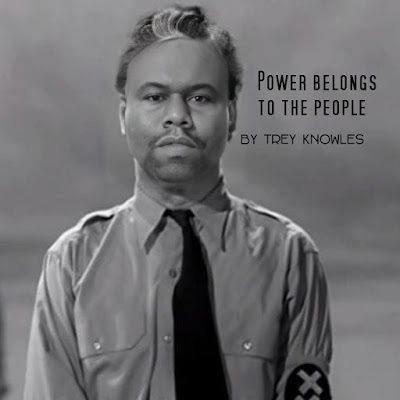
Trey Knowles’ “Power Belongs to the People” is a hopeful anthem that calls out the wrongdoings of tyrants and urges unity among people. The song encourages listeners not to fight politicians out of anger, but to stand up for the poor and the vulnerable, showing that together, we have the power to create a better world.
https://crosssides.blogspot.com/Is Islam One with God?
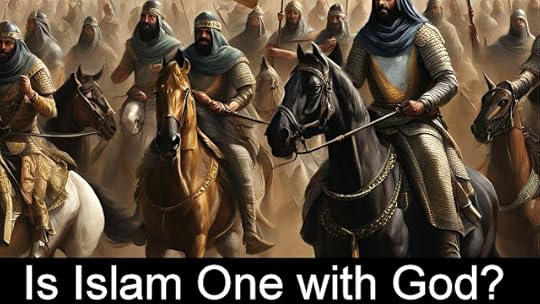
Is Islam One with God?
Islam began in 610 CE, when Prophet Muhammad received his first revelation in Mecca, according to Islamic tradition. This event is considered the starting point of Islam, as it marks the beginning of the divine revelations that would later become the Quran.
Note: Many years after Christ
Mecca, or Makkah, is the holiest city in Islam, located in the western region of Saudi Arabia. It's the birthplace of Prophet Muhammad and the location of the Kaaba, Islam's most sacred shrine, which is the center of the Great Mosque (Masjid al-Haram). Mecca is also the destination for the annual Hajj pilgrimage, a mandatory journey for able-bodied Muslims who can afford it.
Note: Matthew 24:26; Jesus says “Therefore if they say to you, ‘Look, He is in the desert!’ do not go out; or ‘Look, He is in the inner rooms!’ do not believe it.
Does the Prophet Muhammad come from the desert?
While Prophet Muhammad was born in the city of Mecca, which is located in the desert, it's important to clarify that he wasn't born in the desert itself. Mecca is a mountainous town in the high desert plateau of western Arabia. He was raised in the desert, as it was common practice to send infants to live with Bedouin families, according to Islamic tradition.
Here's a more detailed explanation:
Place of Birth:
.
Prophet Muhammad was born in Mecca, a town known for its bustling trade and religious significance.
Desert Environment:
.
Mecca is situated in a mountainous desert plateau, making it a desert city, but not the desert in the traditional sense.
Early Life in the Desert:
.
As a young infant, Prophet Muhammad was sent to live with a Bedouin family in the desert as part of a common practice. This practice was believed to promote the health and resilience of children.
Later Life:
.
He later returned to Mecca and continued to live there until his emigration to Medina.
Note: 1 Corinthians 13:1-4 says If I speak in the tongues of men or of angels, but do not have love, I am only a resounding gong or a clanging cymbal. If I have the gift of prophecy and can fathom all mysteries and all knowledge, and if I have a faith that can move mountains, but do not have love, I am nothing. If I give all I possess to the poor and give over my body to hardship that I may boast, but do not have love, I gain nothing.
As I've examined, some verses in the Quran, such as 47:4, or 9:29, directly tell them to kill the people who reject Islam or God. I found this kind of disturbing, considering that Islam is supposed to believe in the one true God and follow the image of God, and welcome all people, and if the Quran is the word of Allah himself, God can punish people himself because he is the creator.
Note: For Example- In the story from Genesis, the King of Egypt, Pharaoh, was not actively prevented from sleeping with Abraham's wife, Sarah. Instead, the Bible tells that God intervened to protect Sarah. God caused Pharaoh to be stricken with sickness and disease until Sarah was returned to Abraham. This was because God had a promise to Abraham and Sarah about having a son, and He intervened to keep them together.
Killing in the Name of Islam is wrong? Matthew 24:28 Wherever there is a carcass, there the vultures will gather.
Note: 1 John 3:15 says. Anyone who hates a brother or sister is a murderer, and you know that no murderer has eternal life residing in him.
Is Islam The Second Beast of Religion That Kills? You Decide.
The Islamic conquests, also known as the Arab conquests or Early Muslim conquests, refer to the military expansion of the Islamic Caliphate following the death of the Prophet Muhammad in 632 CE. This period saw the rapid expansion of Arab Muslim power beyond the Arabian Peninsula, establishing a vast empire that encompassed territories across Asia, Africa, and Europe. The conquests were fueled by a combination of military strength, religious fervor, and the political circumstances of the time.
Key Aspects of the Islamic Conquests:
Rapid Expansion:
The conquests were characterized by swift and significant expansion, particularly during the Rashidun Caliphate (632-661 CE), and later under the Umayyad Caliphate (661-750 CE).
Military Success:
Arab armies, often led by skilled commanders like Khalid ibn al-Walid, achieved decisive victories, conquering territories like Persia, Syria, and Egypt.
Political and Religious Factors:
The rise of Islam and the desire to spread its message played a significant role in the conquests. Simultaneously, the political instability and weakened states of the Byzantine and Sasanian empires also contributed to the ease of conquest.
Diverse Territories:
The Islamic conquests encompassed a wide range of territories, including parts of the Middle East, North Africa, the Iberian Peninsula, and Central Asia.
Impact and Legacy:
The conquests brought about significant changes, including the spread of Islam, the establishment of new political structures, and the transformation of existing societies.
Major Conquests:
Conquest of Persia (633-651 CE):
.
The Sasanian Empire was defeated, leading to the incorporation of Persia into the Islamic Caliphate.
Conquest of Syria (634-638 CE):
.
The Byzantine Empire's control over Syria was broken, and the region was brought under Arab rule.
Conquest of Egypt (641-642 CE):
.
Egypt was swiftly conquered and remained under Muslim rule ever since.
Conquest of North Africa (647-709 CE):
.
The Maghreb region, west of Egypt, was progressively brought under Islamic rule.
Conquest of the Iberian Peninsula (711 CE):
.
The Visigothic Kingdom in Spain was conquered by Arab and Berber forces, leading to the establishment of the Umayyad Caliphate in al-Andalus.
Does Muslim or Islam match the character or Image of God?
Since Islam went on its conquest, how many people has it killed?
Note: Matthew 24:7-11: Jesus says, Nation will rise against nation, and kingdom against kingdom. There will be famines and earthquakes in various places. All these are the beginning of birth pains.
Note: This has happened since Jesus left the earth.
“Then you will be handed over to be persecuted and put to death, and you will be hated by all nations because of me.
Note: Things to Consider: Islam Kills Christians, or All Nations hate Black people, so they kill them or enslave them.
At that time, many will turn away from the faith and will betray and hate each other, and many false prophets will appear and deceive many people.
Note: Turn away from the Son of Man to join Islam, then they betray their brother who believes in Jesus.
Note: This has happened since Jesus left and is still happening. Islam is killing Jesus followers.
Does Islam match God's Character? How many nations and people follow this Religion?
Note: James 1:27 says. Religion that God our Father accepts as pure and faultless is this: to look after orphans and widows in their distress and to keep oneself from being polluted by the world.
Quran Addresses Murder:
The Quran addresses murder as a grave offense and emphasizes the sanctity of human life. It states that taking a life, unless it's in the case of murder or for spreading mischief in the land, is as if one has killed all of humanity.
Here are some key points regarding the Quran's perspective on murder:
Sanctity of Life: The Quran emphasizes the sacredness of human life, considering it a gift from God that must be respected and protected.
Prohibition of Unjust Killing: Killing an innocent person is strictly forbidden and considered a major crime.
Consequences of Intentional Murder: The Quran warns of severe consequences in the hereafter for intentional murder, including eternal hellfire and divine wrath.
Punishment in This Life: Islamic law (Sharia) provides for the death penalty (Qisas) as a possible punishment for intentional murder, but it also strongly encourages forgiveness or acceptance of blood money (Diyya) as alternatives.
Discouragement of Revenge: While retaliation (Qisas) is an option, forgiveness is encouraged, and the victim's family is given the choice to pardon the perpetrator or accept compensation.
Contextual Understanding of Verses Related to Violence: Some verses in the Quran that seem to address violence are understood to be relevant within specific historical and military contexts, particularly in self-defense against aggressors. These verses do not justify the killing of innocent civilians.
It's important to note that the interpretation of specific verses related to violence and punishment in Islam is complex and subject to differing perspectives among scholars and within various schools of thought.
Quran addresses murder and the Bible addresses murder, so why do Muslims and Christians Murder and hate? Those who do such a thing don't belong to God, because God is love.
https://crosssides.blogspot.com/
June 7, 2025
610 CE is After Christ
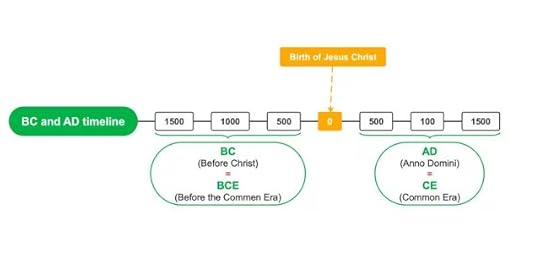
610 CE is after Christ, as CE stands for Common Era, which is equivalent to AD (Anno Domini). The CE/AD system measures time from the traditionally calculated birth year of Jesus Christ.
Here's why:
CE is a secular equivalent to AD: CE stands for "Common Era" and is used as a secular alternative to AD, which stands for "Anno Domini" (Latin for "in the year of the Lord").
Both systems start from the same point: Both AD and CE use the estimated birth year of Jesus Christ as the starting point (Year 1).
610 CE indicates a year after the starting point: Therefore, 610 CE refers to a year that occurred 610 years after that starting point, placing it well after the time of Christ's birth.
For instance, 1 CE is the same year as AD 1. Events in 610 CE fall within the time period measured by both AD and CE.
https://crosssides.blogspot.com/The Islamic Slave Trade on Africans
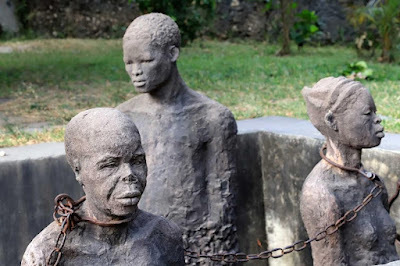
Over the years, global attention and discussions on slavery have primarily focused on the Trans-Atlantic slave trade, dominated by American and European merchants. However, another equally significant trade has been largely overlooked and, in some cases, treated as a taboo subject, despite its profound impact on Africa, its people and their way of life across generations.
The Arab Muslim slave trade, also known as the Trans-Saharan or Eastern slave trade, is recognised as the longest in history, spanning over 1,300 years. It forcibly removed millions of Africans from their homeland, subjecting them to brutal conditions while they laboured in foreign lands.
Scholars have referred to it as a "veiled genocide," a term reflecting the extreme humiliation and near-death experiences endured by the enslaved, from their capture in slave markets to their forced labour abroad and the harrowing journeys in between.
While the exact number of Africans captured in the Trans-Saharan slave trade remains disputed, most scholars estimate the figure to be around nine million.
Who was behind the Trans-Saharan slave trade?
The Eastern slave trade in Africa was primarily concentrated in the East and West African regions. In East Africa, the coastal region was the main route, with Tanzania's Zanzibar archipelago becoming a central hub for this trade.
"The Arabs raided sub-Saharan Africa for thirteen centuries without interruption," reads a loosely translated excerpt from The Veiled Genocide, a book by Tidiane N'Diaye, a Franco-Senegalese author and anthropologist. "Most of the millions of men they deported have disappeared as a result of inhumane treatment. This painful page in the history of black people has apparently not been completely turned."
Enterprising Arab merchants and middlemen would gather in Zanzibar to acquire raw materials such as cloves and ivory. They would then purchase enslaved Africans, who were forced to carry these goods and labour on plantations abroad. Slaves from as far as Sudan, Ethiopia and Somalia were brought to the Zanzibar market and shipped across the Indian Ocean to the Persian Gulf and Arabian Peninsula, where they were forced to work in places like Oman, Iran, Saudi Arabia and Iraq.
Notably, African Muslims were exempt from enslavement due to Islamic legal views.
The Trans-Saharan Caravan focused on the West African region, stretching from the Niger Valley to the Gulf of Guinea, following the Trans-Saharan routes to slave markets in the Maghreb and Nile Basin. The journey, which could last up to three months, subjected slaves to brutal conditions, with many succumbing to disease, hunger and thirst along the way.
It is estimated that 50 per cent of the enslaved individuals in this trade died during transit.
Sex slavery and the origins of black arabs
While European merchants primarily sought strong young men to work as labourers on their plantations, Arab merchants focused on concubinage, capturing women and girls to serve as sex slaves in harems. In fact, the demand for female slaves was so high that merchants would often double their price, with the ratio of captured women to men being three to one.
Male slaves were often assigned to work as field labourers or guards at harems. To prevent them from reproducing in case they became intimate with female slaves, men and boys were subjected to castration, a brutal procedure that resulted in the deaths of many during the process.
"The castration of black male slaves in the most inhumane manner altered an entire generation, as these men could not reproduce," said Liberty Mukomo, a lecturer at the University of Nairobi Institute of Diplomacy and International Studies.
"The Arab masters sired children with the black female slaves. This devastation by the men saw those who survived committing suicide. This development explains the modern black Arabs who are still trapped by history."
What made the Arab slave trade particularly brutal and painful, he pointed out, was the degree and intensity with which it disrupted the entire social, reproductive and economic lives of Black people, leaving a deep and lasting impact on their communities.
Lingering Legacy of Slavery in Arab Countries
While Europe, a major player in the African slave trade, abolished the practice centuries ago and the United States officially ended it in 1865, many Arab countries continued the trade well into the 20th century.
It ultimately took significant international pressure, disruption of trade, and revolts by enslaved people to bring an end to the practice, Mukomo said.
In Malawi, slavery was officially criminalised as recently as 2007, with reports suggesting that some Arab countries may still be involved in the practice, albeit clandestinely.
!function(r,u,m,b,l,e){r._Rumble=b,r[b]||(r[b]=function(){(r[b]._=r[b]._||[]).push(arguments);if(r[b]._.length==1){l=u.createElement(m),e=u.getElementsByTagName(m)[0],l.async=1,l.src="https://rumble.com/embedJS/u2kzfpi&qu..., document, "script", "Rumble");Rumble("play", {"video":"v6s9s95","div":"rumble_v6s9s95"});https://crosssides.blogspot.com/
June 4, 2025
George Washington wrote a letter to Sultan Mohammed Ben Abdallah
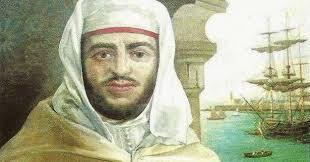
George Washington wrote a letter to Sultan Mohammed Ben Abdallah of Morocco in 1789, expressing the United States' gratitude for his friendship and protection. The letter also mentioned the US's change in government and its new Constitution.
Here's a more detailed breakdown of the letter:
Purpose:
The letter was a formal expression of thanks from the United States for Sultan Mohammed Ben Abdallah's previous friendly actions, particularly his protection of US citizens in their commerce with Morocco.
Gratitude:
Washington acknowledged the Sultan's "important mark of your friendship" and expressed the United States' sincere thanks.
New Government:
The letter also informed the Sultan about the United States' shift to a new government based on the Constitution, with a copy of the Constitution enclosed.
Sustained Friendship:
Washington assured the Sultan that he would continue to promote friendship and harmony between the United States and Morocco, highlighting the importance of the existing treaty of amity and commerce.
Context:
This letter was written shortly after the US established its new government under the Constitution. It also followed a period of diplomatic efforts by the US to secure trade with Morocco and other Barbary States.
https://crosssides.blogspot.com/Moctezuma II
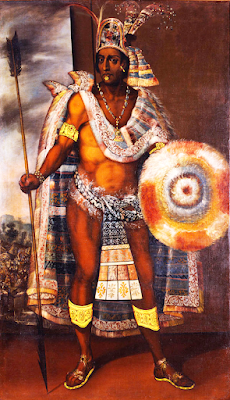
Moctezuma Xocoyotzin (c. 1466 – 29 June 1520), retroactively referred to in European sources as Moctezuma II, and often called Montezuma, was the ninth emperor of the Aztec Empire (also known as the Mexica Empire), reigning from 1502 or 1503 to 1520. Through his marriage with Queen Tlapalizquixochtzin of Ecatepec, one of his two wives, he was also the king consort of that altepetl.
The first contact between the indigenous civilizations of Mesoamerica and Europeans took place during his reign. He was killed during the initial stages of the Spanish conquest of the Aztec Empire when Hernán Cortés, the Spanish conquistador, and his men seized the Aztec capital of Tenochtitlan. During his reign, the Aztec Empire reached its greatest size. Through warfare, Moctezuma expanded the territory as far south as Xoconosco in Chiapas and the Isthmus of Tehuantepec, and incorporated the Zapotec and Yopi people into the empire. He changed the previous meritocratic system of social hierarchy and widened the divide between pipiltin (nobles) and macehualtin (commoners) by prohibiting commoners from working in the royal palaces.
Though two other Aztec rulers succeeded Moctezuma after his death, their reigns were short-lived and the empire quickly collapsed under them. Historical portrayals of Moctezuma have mostly been colored by his role as ruler of a defeated nation, and many sources have described him as weak-willed, superstitious, and indecisive. However, depictions of his person among his contemporaries are divided; some depict him as one of the greatest leaders Mexico had, a great conqueror who tried his best to maintain his nation together at times of crisis, while others depict him as a tyrant who wanted to take absolute control over the whole empire. Accounts of how he died and who were the perpetrators (Spaniards or natives) differ. His story remains one of the most well-known conquest narratives from the history of European contact with Native Americans, and he has been mentioned or portrayed in numerous works of historical fiction and popular culture.
https://crosssides.blogspot.com/How The British Eliminated The Entire Aborigine Tasmanian Population Of Australia In The 1800s
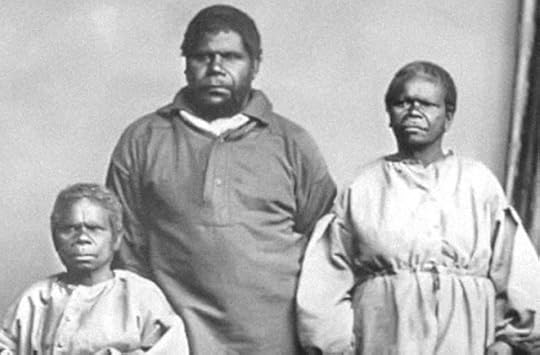
We have mentioned in many of our articles, that Black people were the first humans on this planet, and that Black people were originally found in all corners of the earth. There were indigenous or migrated Black populations all over Europe, Asia, America, and other parts of the world. But as we continue to dig further into history, we realize that many of these indigenous Black civilizations were set upon by Caucasians and murdered – in some cases the whole indigenous population was wiped out.
We are talking mass murder and genocide by European invaders!!!
The story of the “Black” Tasmanian people of Australia is no different. Tasmania was/is an island that is slightly bigger than the size of West Virginia, in the United States Of America, and is also located 200 miles off the southeast coast of Australia. Archaeologic findings and history estimate that these Black indigenous people crossed the island on an ancient bridge that connected Tasmania to the continent of Australia.
The Palawa people were the first indigenous people of Tasmania. They were known for their curled hair which was often tight and skin colors that ranged from Black to reddish-brown. One of their most prominent features was their broad noses, wide mouths, and sets of deep brown eyes, which gave them an ancient and medieval look. They are called the Black Aborigines of Australia.
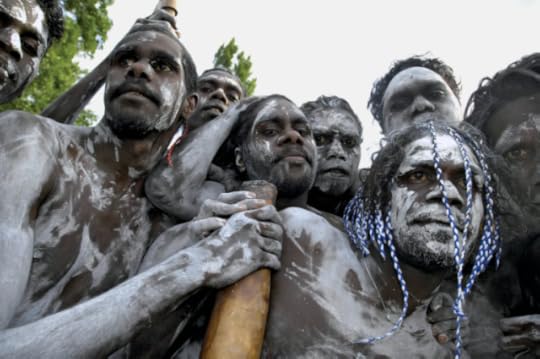
They were not pygmies but they were short, and some of them could easily be passed for pygmies, with their little body fat, which made them a bit plumpy. Records hold that they arrived on the Island around 35,000 years ago. They eventually became cut off from the rest of the world, as their bridge was submerged in water, due to rising sea levels. And for over 10,000 years they lived alone without any contact with the outside world.
The Presence Of Europeans In Tasmania
The peace and calm that the Aborigines of Tasmania enjoyed for over 10,000 years were disrupted in the December of 1642, when the first Europeans arrived on the Island, after anchoring off the Tasmanian coast. A Dutch navigator, named Abel Jansen, was the one who led the expedition.
And in the European manner, he was quick to name the Island after the governor-general of the Dutch East Idia Company, Anthony Van Diemen. He named the island, Van Diemen. And without the consent of the owners of the land, they continued to call the Island Van Diemen till the year 1855.
Before 1855, the British, as they scouted the world for lands to conquer and loot, reached the Island on the 28th of January, 1777. The British in their usual manner invaded the land and turned Tasmania into a settlement for their prisoners and convicted criminals. Now we are talking about the people with the worst behavior and characters in British society – criminals, rapists, killers, and devils.
These were the people that were brought to live in Tasmania. And as history tells us, they were brutal and inhumane in their dealings with the Aborigines. When a sum of the soldiers, missionaries, prisoners, and administrators was done, it was realized that the British had landed and settled over 65,000 Black-hating Caucasians in Tasmania.
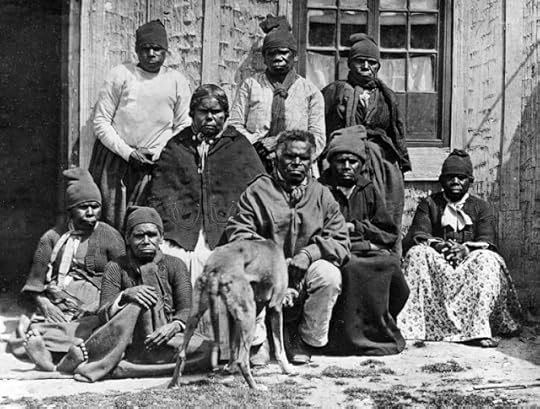
The Slaughter And Near Genocide Of The Tasmania People By The British
By 1804, the British colonial government, and their convicts started to slaughter and murder the Tasmanian Aborigines in cold blood. They would kidnap, torture, and enslave them. They did that because they didn’t consider the Aborigines to be full humans – they followed the lies of European scholars who twisted human origins, placing Caucasians at the top of the pyramid and placing Black people at the bottom.
Their exploitation of the Tasmanian people was very sadistic, and barbaric, just like we found them doing to Africans at that point in time. Their mission was the total annihilation of the Black race, and they wasted no time in decimating the Tasmania population.
The Europeans on the Island (the British and their partners in genocide), tied the Tasmanian Black men to trees and used them for shooting target practice. They kidnapped the women and raped them while they were chained. The colonial officers and military often gave the criminals and convicts the authority to hunt the Aborigines for sport, shooting, clubbing, and spearing the men to death. To crown it all, they had fun while roasting the babies of the Aborigine alive.
The Black War Of Van Diemen’s Land
The aborigines of Tasmania did not just sit back and watch the invaders destroy them. They put up a strong resistance. But we fear their resistance was not enough. Because if it was, they would still be around today. But no one of that nation remains today.
In their usual manner, the British declared war on the Tasmanian aborigines and named the genocide “The Black War of Van Dieman’s Land”. This lasted for 27 years, between 1803 and 1830. And in those evil years, the Black population of Tasmania was reduced from over 5,000 to less than 75 people.
To elevate the genocide, two years before the end of the so-called war, the British government declared martial law in 1828 and gave the white in Tasmania authority to kill the Black people on sight. This was the last resistance for the Aborigines. They defended themselves and their land with clubs, spears, arrows, and other sundry weapons. But their weapons were not enough to match the guns, and firepower of the British.
The British were really brutal, ruthless, and barbaric. As the two years advanced, the British established a bounty program for Black people and they named it “Black catching”, which then became a huge business for the Europeans in Tasmania. They offered the bounty hunters 5 pounds for each adult Aborigine, and 2 pounds for the children. Many other options that were made available for the genocide were for the white people to enslave and sell the aborigines, trap, and poison, and also chase them with dogs. But they ended up with the bounty hunting option.
After the so-called war, the British rounded up the remaining aborigines and put them in concentration camps, since they no longer pose a threat to the British.
The Last Tasmanians And How They Disappeared
The last full-blooded Tasmanian was a man named William Lanney, who was popularly known as King Billy. Lanney was born in 1835 and grew up on Flinders Island. When he turned 13, he and the remnant of his people were moved to a concentration camp which was called Oyster Cove. He grew up and became a sailor and often went whaling for some years. Being the last male Tasmanian, Lanney was considered by the world to be a human relic – the last of an indigenous tribe, murdered by the British.
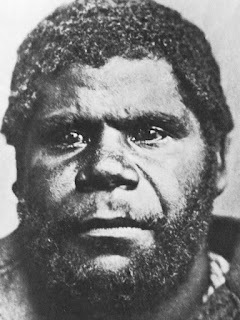
In the year 1860, Lanney was introduced to Prince Albert. One would wonder what the use of glorifying him with royal visits to European monarchs was when the same Europeans murdered his entire ethnic group. He later died on the 2nd of March 1868, after returning ill from one of his whaling voyages in the February of 1868. He passed away in the room he stayed at The Dog and Partridge public house in Hobart, Tasmania.
Once he died, Europeans started to scramble for his body. At that time, it was in the habit of European scientists to use the body of Black people for experiments. While he was still at one of the colonial hospitals, a group of people were bargaining for his bones. They claimed that they were representatives of the Royal Society of Tasmania.
The night before he was buried, a surgeon went into the mortuary where Lanney was kept, skinned his head, and removed his skull. His skull was then replaced with the skull of another dead person, after which his head’s skin was stitched back.
After the Royal Society found out that his skull had been removed, they, in turn, dismembered him. His hand and feet were cut off and shared among themselves. And as usual with the genocide of their people, no one raised an eye-lid, no government or authority was bothered. No one was punished and no one called what happened evil. And just like that, Lanney, the last surviving Tasmanian was discrete and gone forever.
The Ordeals Of One Of The Last Tasmanians – Truganini The experience, suffering, and torture that Truganini faced can be said to be a full description and Biography of the persecution and genocide of the Tasmanian people.
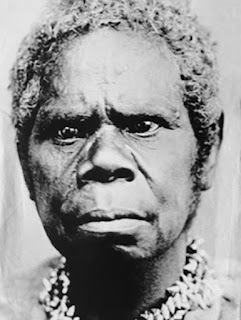
She died on the 7th of May, 1876, at the age of 73. Her story is one that would shake you to your bones. She had to watch her intended husband get drowned by two Europeans, and after that, she was raped by his murderers. Her mother was stabbed to death in cold blood by one of the many vicious Europeans on the Island. They also kidnapped her sister and probably killed her after raping her.
When she was on her death bed, she made a most touching plea to the doctor. She said: “Don’t let them cut me up.” This meant that it was then a practice to cut up the few remaining Tasmanians and use them for experiments or whatever evil and dark practices they used the skeletons of Black people for.
Just like she had predicted, the Europeans exhumed her body after her burial, played her skeleton in a box, and put her on exhibition in the Tasmanian Museum, and would remain there till 1947. Her skeleton, finally in 1976, was cremated and her ashes were scattered at sea.
The true figure of ancient people and civilizations that have been wiped out by Europeans over the curse of human history can never be estimated. This is because Europeans dedicated hundreds of years to the murder and extermination of indigenous people around the world – mainly Black people.
In our course of reading and compiling these various types of research, we are often shocked to our bones, by the kind of evil that could be conceived by the heart of the British. And then we ask: Are these people really humans?
Our only hope is that the majority of Black people worldwide would read and know these things, so they can better understand the world they live in, and how far they have come as a race. With such knowledge, our people will be guided on how to respond to the love or aggression from Europeans in this age and time.
Berber People
The Berbers, also known as Amazigh (plural Imazighen), are the indigenous people of North Africa. They are a diverse group of ethnic groups with a shared history and culture, pre-dating the Arab conquest of the region. The term "Berber" itself is sometimes considered pejorative by some Amazigh, who prefer to be called by their own tribal or regional names or by the general term "Amazigh".
Key points about the Berber people:
Indigenous to North Africa:
Berbers have inhabited North Africa for thousands of years, and are considered the original inhabitants of the region.
Diverse Group:
Berbers are not a single homogenous group, but rather a collection of different ethnic groups and tribes with their own languages and cultures.
Various Languages:
The Berber languages, collectively known as Tamazight, are part of the Afro-Asiatic language family.
Cultural Significance:
Berbers have a rich and diverse culture, including traditions of weaving, music, storytelling, and more.
Modern Identity:
Many Berbers today identify as Amazigh, a term meaning "free men" or "noble people".
Ongoing Movements:
There are ongoing movements within Berber communities to promote their cultural identity and linguistic rights.
https://crosssides.blogspot.com/Turtle Island North America
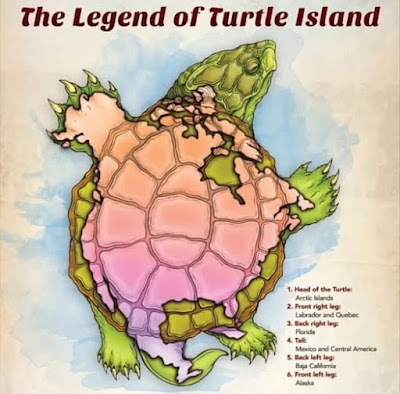
'Turtle Island' is the name for the lands now known as North and Central America. It is a name used by some Indigenous peoples who believe their land was formed on the back of a turtle. Though regional versions exist, the core of this creation story relates to a time when the planet was covered in water.
Indigenous place names carry the stories of the land and its people, reflecting the unbroken relationships between them. From the moment Columbus landed at Guanahaní and christened it “San Salvador,” place names became weapons to claim Indigenous land. The erasure of Indigenous peoples from colonial maps was deliberate. Reclaiming these names is part of a movement to revitalize endangered languages, undo centuries of suppression and widespread misinformation, and acknowledge unextinguished Indigenous land tenure.
This map was a collaborative endeavor involving hundreds of Indigenous elders and language-keepers across the continent to accurately document place names for major cities and historical sites. The process of consultation and research for the map was a 9-year effort. In fact, the Decolonial Atlas was started in 2014 initially just to make this map.
Nearly 300 names are compiled here, representing about 150 languages. Some names are from the precolonial era, while others are not quite as old, and in certain cases where the original name has been lost, Indigenous collaborators reconstructed names based on their cultural relationship with that location. Because Indigenous languages are living and dynamic, none of these names are any less “authentic” than others. Embedded in all these names are ancestral words and worldviews. However, some major cities are missing from the map because, as our collaborator DeLesslin George-Warren (Catawba) pointed out, “The fact is that we’ve lost so much in terms of our language and place names. It might be more honest to recognize that loss in the map instead of giving the false notion that the place name still exists for us.”
The names are written as they were shared with us, but may be spelled differently depending on the orthography. Note that some languages, like Lushootseed, do not use capital letters, while others, like Saanich, are written only in capital letters. Most names are spelled in the modern orthographies of their languages, but some, like the Lenape name for Philadelphia, were spelled as recorded by early settlers because it could not be confidently interpreted.
In the context of Indigenous erasure, the global collapse of traditional ecological knowledge, language suppression and revitalization, our hope is that this map will lead to more accurate cultural representation and recognition of Indigenous sovereignty.
https://crosssides.blogspot.com/
June 3, 2025
Guinea Bissau People
In southwestern Guinea Bissau there are some islands where a very special people live, the Bissago. What is it that makes them so special? It is not the fact of living in balance and harmony with the spectacular nature that surrounds them, taking from the land or the sea only what they need to survive. Neither is their deep animistic spirituality, which marks their life with rites to acquire the knowledge of their ancestors. What makes them so special is that, in the Bissago society, the woman is the protagonist.
https://crosssides.blogspot.com/


